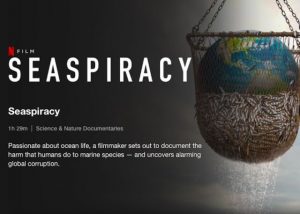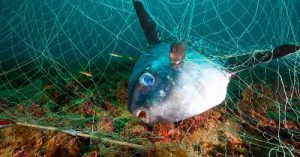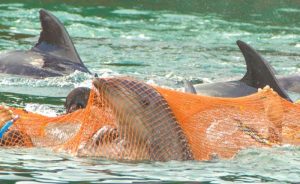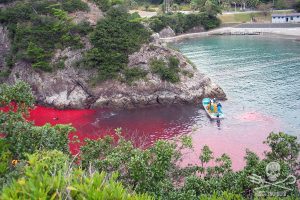“Sealab 2020” was an animated series produced by Hanna-Barbera, the same studio that produced classic cartoons such as “The Flintstones,” “Yogi Bear,” “The Jetsons,” and “Scooby-Doo,” I voiced several cartoon characters for Hanna-Barbera; in “Sealab 2020” I played Sali Murphy, daughter of Captain Michael Murphy, commander of Sealab, an underwater research base. Sealab was home to 250 men, women, and children, and was dedicated to the study and protection of marine life.
The series, produced in 1972-1973, was ahead of its time in developing stories around the destructive effects on sea life, marine mammals, and the environment of human activities such as commercial fishing, shipping, oil spills, and dumping of radioactive waste. At the time, I had no idea of the extent to which humans were – and are – trashing the oceans and causing harm to the living things in it. Most people don’t have much feeling for fish, but when you do some research you learn that they are highly intelligent creatures. As a child, long I became vegan, I never liked to eat fish after witnessing a fish being pulled from its ocean home. I saw the sharp metal hook in its mouth, and the fish flapping around on the deck of the boat in panic and agony as it suffocated to death.
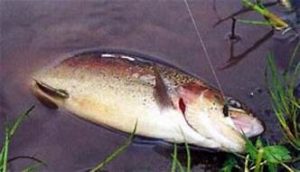 As an adult, I learned that fish are individuals who have their own unique personalities. Dive guides have been known to name friendly fish who follow divers around and enjoy being petted, just as dogs and cats do. Yet billions of fish die every year in nets, hooks, and on longlines.
As an adult, I learned that fish are individuals who have their own unique personalities. Dive guides have been known to name friendly fish who follow divers around and enjoy being petted, just as dogs and cats do. Yet billions of fish die every year in nets, hooks, and on longlines.
According to Culum Brown, a researcher at Macquarie University in Sydney, “fish are more intelligent than they appear. In many areas, such as memory, their cognitive powers match or exceed those of ‘higher’ vertebrates.” In Fish and Fisheries, biologists wrote that fish are “steeped in social intelligence, pursuing Machiavellian strategies of reconciliation, exhibiting stable cultural traditions, and cooperating to inspect predators and catch food.”
Fish communicate through a range of low-frequency sounds from buzzes and clicks to yelps and sobs. These sounds, most of which are only audible to humans with the use of special instruments, communicate emotional states such as alarm or delight, and help with courtship.
While fish do not always express pain and suffering in ways that humans can easily recognize, scientific reports from around the world substantiate the fact that fish feel pain. Researchers from Edinburgh and Glasgow Universities studied the pain receptors in fish and found that they were strikingly similar to those of mammals. The researchers concluded that “fish do have the capacity for pain perception and suffering.”
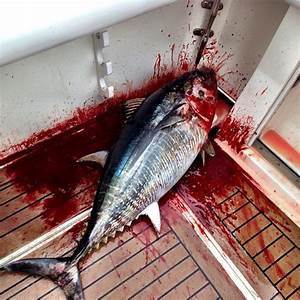 Hooked fish struggle out of fear and intense physical pain. Once fish are taken out of their natural environment and pulled into ours, they suffocate. Their gills often collapse, and their swim bladders can rupture because of the sudden change in pressure.
Hooked fish struggle out of fear and intense physical pain. Once fish are taken out of their natural environment and pulled into ours, they suffocate. Their gills often collapse, and their swim bladders can rupture because of the sudden change in pressure.
The average U.S. consumer eats nearly 16 pounds of fish and shellfish every year. To meet this demand, U.S. commercial fishers reel in more than 8 billion pounds of fish and shellfish annually.
Commercial fishers use factory-style trawlers the size of football fields to catch fish. Miles-long nets stretch across the ocean, capturing every fish and marine mammal in their path. Fish are scraped raw from rubbing against the rocks and debris that are caught in the nets with them. Then they bleed or suffocate to death on the decks of the ships, gasping for oxygen and suffering for as long as 24 hours. Some fishing boats use gill nets, which ensnare every animal they catch, and fish are mutilated when they are extracted from the nets.
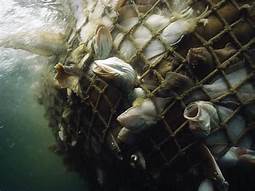 Longline fishing, in which 40 miles of monofilament fishing line dangles thousands of enormous, individually metal baited hooks to catch tuna and swordfish, drowns thousands of turtles and birds every year. Because of the fishing industry’s indiscriminate practices, the population of the world’s large predatory fish, such as swordfish and marlin, has declined by 90 percent since the advent of industrialized fishing.
Longline fishing, in which 40 miles of monofilament fishing line dangles thousands of enormous, individually metal baited hooks to catch tuna and swordfish, drowns thousands of turtles and birds every year. Because of the fishing industry’s indiscriminate practices, the population of the world’s large predatory fish, such as swordfish and marlin, has declined by 90 percent since the advent of industrialized fishing.
Overfishing is threatening shark populations, too, with more than 100 million killed every year. One underwater photographer says that when he works off the north coast of New South Wales, he finds that “almost every second grey nurse shark… has a hook hanging out of its mouth, with a bit of trailing line following it.” Many sharks are the victims of “finning,” in which fishers catch sharks, haul them on deck, hack off their fins (for expensive shark fin soup), and toss the maimed, helpless animals back into the ocean to die in agony.
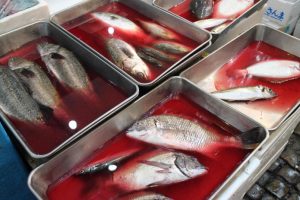 Like the flesh of other animals, the flesh of sea animals contains excessive amounts of protein, fat, and cholesterol.
Like the flesh of other animals, the flesh of sea animals contains excessive amounts of protein, fat, and cholesterol.
What can you do? Never buy or eat fish. Grains, legumes, vegetables, nuts, and seeds provide all the essential amino acids you need. Vegan products like mock lobster, shrimp, and crab have all the taste of the “real thing” with none of the cruelty or contaminants. Omega-3 fatty acids, which help prevent heart disease, can be found in flaxseeds, canola oil, nuts, and avocados. Recipes for fabulous, healthy, and animal-friendly vegetarian dishes, including faux fish sticks and sushi, can be found at VegCooking.com.
Peace for ALL the animals with whom we share this planet!


